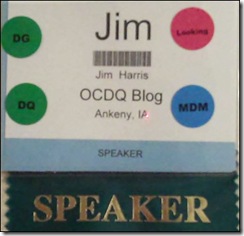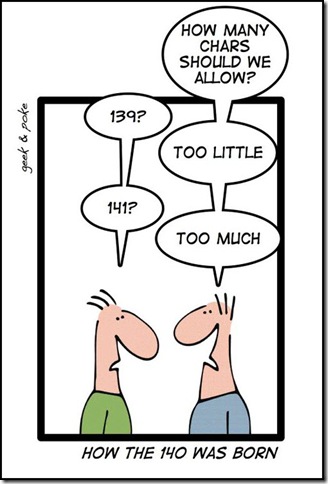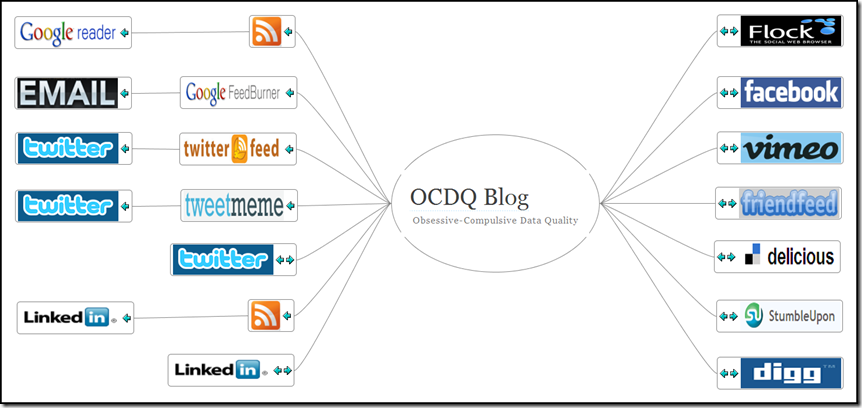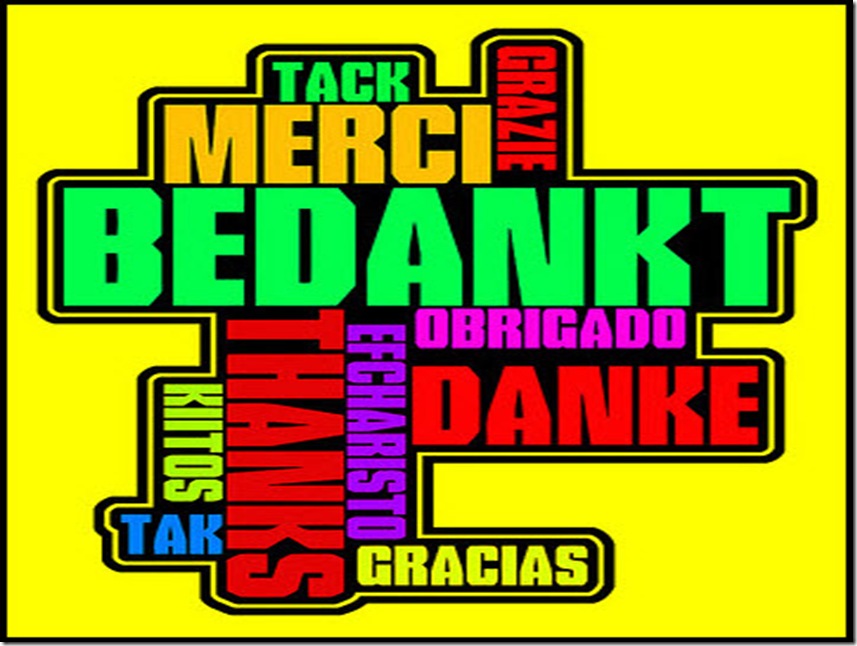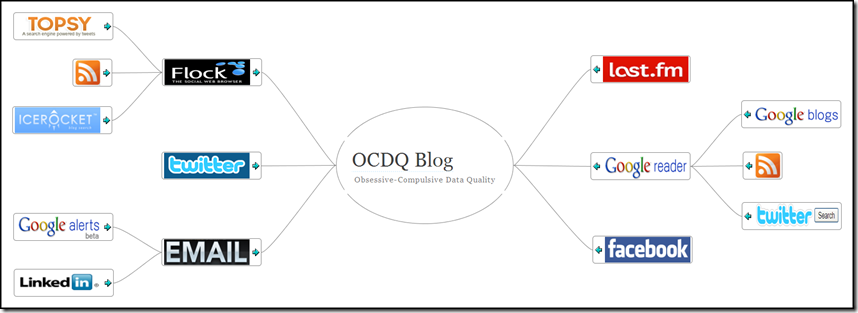Enterprise Data World 2010
/Enterprise Data World 2010 was held March 14-18 in San Francisco, California at the Hilton San Francisco Union Square.
Congratulations and thanks to Tony Shaw, Maya Stosskopf, the entire Wilshire Conferences staff, as well as Cathy Nolan and everyone with DAMA International, for their outstanding efforts on delivering yet another wonderful conference experience.
I wish I could have attended every session on the agenda, but this blog post provides some quotes from a few of my favorites.
Applying Agile Software Engineering Principles to Data Governance
Conference session by Marty Moseley, CTO of Initiate Systems, an IBM company.
Quotes from the session:
- “Data governance is 80% people and only 20% technology”
- “Data governance is an ongoing, evolutionary practice”
- “There are some organizational problems that are directly caused by poor data quality”
- “Build iterative 'good enough' solutions – not 'solve world hunger' efforts”
- “Traditional approaches to data governance try to 'boil the ocean' and solve every data problem”
- “Agile approaches to data governance laser focus on iteratively solving one problem at a time”
- “Quality is everything, don't sacrifice accuracy for performance, you can definitely have both”
Seven iterative steps of Agile Data Governance:
- “Form the Data Governance Board – Small guidance team of executives who can think cross-organizationally”
- “Define the Problem and the Team – Root cause analysis, build the business case, appoint necessary resources”
- “Nail Down Size and Scope – Prioritize the scope in order to implement the current iteration in less than 9 months”
- “Validate Your Assumptions – Challenge all estimates, perform data profiling, list data quality issues to resolve”
- “Establishing Data Policies – Measurable statements of 'what must be achieved' for which kinds of data”
- “Implement the data quality solution for the current iteration”
- “Evaluate the overall progress and plan for the next iteration”
Monitor the Quality of your Master Data
Conference session by Thomas Ravn, MDM Practice Director at Platon.
Quotes from the session:
- “Ensure master data is taken into account each and every time a business process or IT system is changed”
- “Web forms requiring master data attributes can NOT be based on a single country's specific standards”
- “There is no point in monitoring data quality if no one within the business feels responsible for it”
- “The greater the business impact of a data quality dimension, the more difficult it is to measure”
- “Data quality key performance indicators (KPI) should be tied directly to business processes”
- “Implement a data input validation rule rather than allow bad data to be entered”
- “Sometimes the business logic is too ambiguous to be enforced by a single data input validation rule”
- “Data is not always clean or dirty in itself – it depends on the viewpoint or defined standard”
- “Data quality is in the eye of the beholder”
Measuring the Business Impact of Data Governance
Conference session by Tony Fisher, CEO of DataFlux, and Dr. Walid el Abed, CEO of Global Data Excellence.
Quotes from the session:
- “The goal of data governance is to position the business to improve”
- “Revenue optimization, cost control, and risk mitigation are the business drivers of data management”
- “You don't manage data to manage data, you manage data to improve your business”
- “Business rules are rules that data should comply with in order to have the process execute properly”
- “For every business rule, define the main impact (cost of failure) and the business value (result of success)”
- “Power Shift – Before: Having information is power – Now: Sharing information is power”
- “You must translate technical details into business language, such as cost, revenue, risk”
- “Combine near-term fast to value with long-term alignment with business strategy”
- “Data excellence must be a business value added driven program”
- “Communication is key to data excellence, make it visible and understood by all levels of the organization”
The Effect of the Financial Meltdown on Data Management
Conference session by April Reeve, Consultant at EMC Consulting.
Quotes from the session:
- “The recent financial crisis has greatly increased the interest in both data governance and data transparency”
- “Data Governance is a symbiotic relationship of Business Governance and Technology Governance”
- “Risk management is a data problem in the forefront of corporate concern – now viewing data as a corporate asset”
- “Data transparency increases the criticality of data quality – especially regarding the accuracy of financial reporting”
What the Business Wants
Closing Keynote Address by Graeme Simsion, Principal at Simsion & Associates.
Quotes from the keynote:
- “You can get a lot done if you don't care who gets the credit”
- “People will work incredibly hard to implement their own ideas”
- “What if we trust the business to know what's best for the business?”
- “Let's tell the business what we (as data professionals) do – and then ask the business what they want”
Social Karma
I presented this session about the art of effectively using social media in business.
An effective social media strategy is essential for organizations as well as individual professionals. Using social media effectively can definitely help promote you, your expertise, your company, and its products and services. However, too many businesses and professionals have a selfish social media strategy. You should not use social media to exclusively promote only yourself or your business.
You need to view social media as Social Karma.
For free related content with no registration required, click on this link: Social Karma
Live-Tweeting at Enterprise Data World 2010
The term “live-tweeting” describes using Twitter to provide near real-time reporting from an event. When a conference schedule has multiple simultaneous sessions, Twitter is great for sharing insights from the sessions you are in with other conference attendees at other sessions, as well as with the on-line community not attending the conference.
Enterprise Data World 2010 had a great group of tweeps (i.e., people using Twitter) and I want to thank all of them, and especially the following Super-Tweeps in particular:
Karen Lopez – @datachick
April Reeve – @Datagrrl
Corinna Martinez – @Futureratti
Eva Smith – @datadeva
Alec Sharp – @alecsharp
Ted Louie – @tedlouie
Rob Drysdale – @projmgr
Loretta Mahon Smith – @silverdata
Additional Resources
Official Website for DAMA International
LinkedIn Group for DAMA International
Twitter Account for DAMA International
Facebook Group for DAMA International
Official Website for Enterprise Data World 2010
LinkedIn Group for Enterprise Data World
Twitter Account for Enterprise Data World
Facebook Group for Enterprise Data World
Enterprise Data World 2011 will take place in Chicago, Illinois at the Chicago Sheraton and Towers on April 3-7, 2011.
Related Posts
TDWI World Conference Chicago 2009


